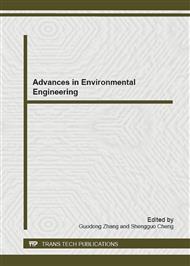p.383
p.387
p.391
p.395
p.400
p.404
p.412
p.418
p.428
A LCA Model for Cleaner Production Performance Measurement
Abstract:
In cleaner production, all management processes of member enterprises come into being a closed-loop operation which needs integrated evaluation and effectively quantitative analysis tool. A Life Cycle model of cleaner production based on popular and practicable supply- chain operations reference model is built here, whose closed-loop framework structure and process decomposition ensure management performance of a multi-layered cleaner production system. Based on its performance system, operational performances are measurable and form an insightful conceptual framework that can be used to guide operation coordination in the whole life cycle of cleaner production. To measure and integrate performances including costs and benefits in different kinds of members, a Technique for Order Preference by Similarity to Ideal Solution (TOPSIS) based on Vague set is employed. For application, a cleaner production case is simplified for illustration.
Info:
Periodical:
Pages:
400-403
Citation:
Online since:
November 2012
Authors:
Price:
Сopyright:
© 2012 Trans Tech Publications Ltd. All Rights Reserved
Share:
Citation:


